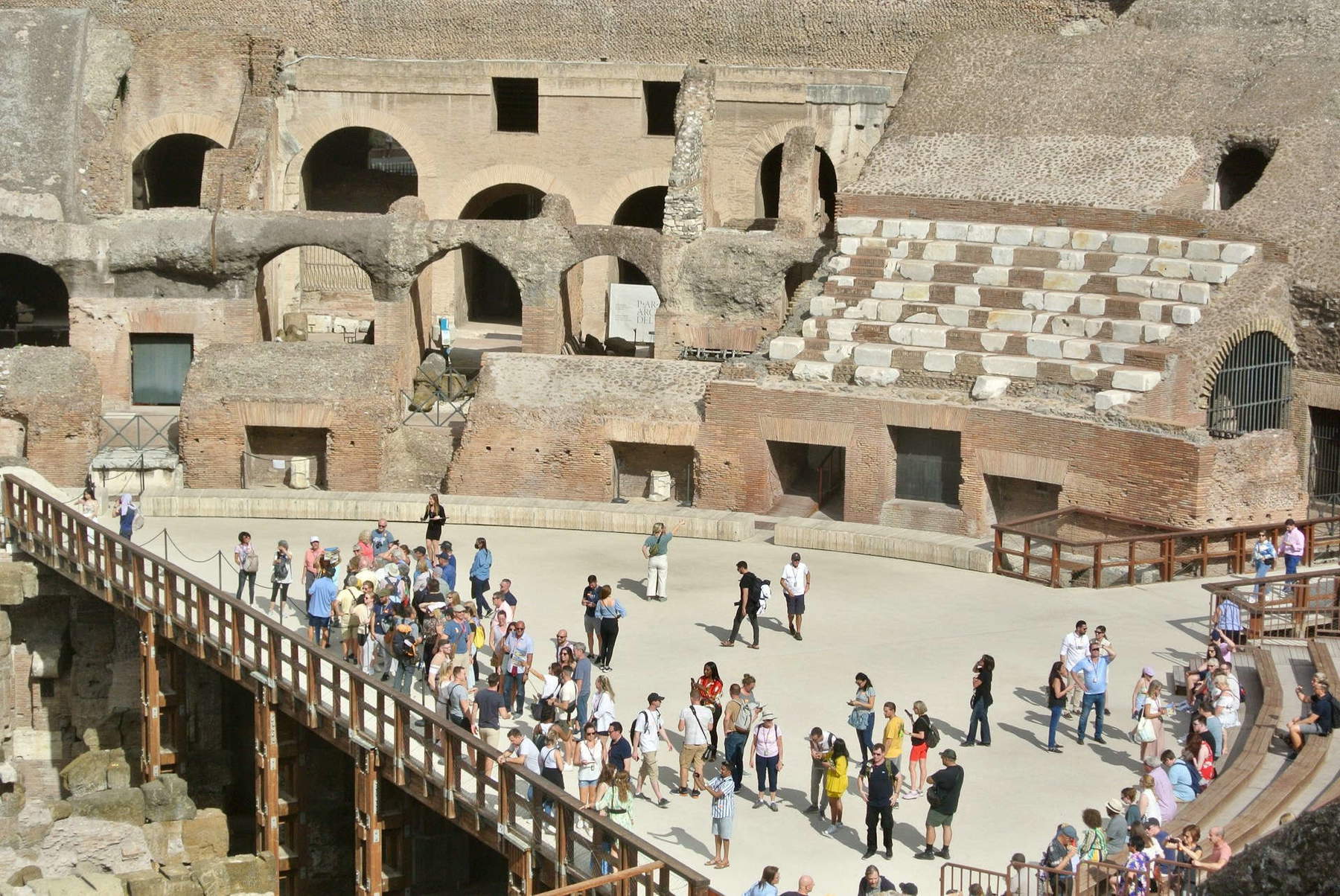35 million and counting. These are the numbers of tourism in Rome recorded in the year just ended where the capital breaks the record by surpassing the 35 million mark by now giving a big hello to the Covid as a distant memory. While one can only rejoice at this, one cannot help but point out that tourism in the capital accounts for 89.5 percent of the attendance figures for all of Lazio (in second place is Latina with 4.5 percent: “What’s there to see in Latina?” tourists evidently ask themselves) and that it is concentrated in a highly circumscribed area that represents 0.3 percent of the municipal territory: in fact, the most visited places are concentrated among the areas of the Colosseum, Trevi Fountain, Pantheon and Vatican. So much for the policies of deseasonalization and, above all, decongestion of flows, the figure undoubtedly signals a problem of “consumption” of the city to which attempts are being made to change direction still evidently without positive results.
The analysis was provided by a research commissioned to RUR - Urban Research Institute (whose President, Professor Giuseppe Roma, is also Vice President of the Italian Touring Club) by the ’CRU - Regional Council’ of Unipol in Lazio (CRUs are informal bodies present in all regions and aggregate the stakeholders of the Unipol Group) . The banking and insurance group of the cooperative system of Emilia, in fact, is very sensitive to the issue of tourism since once it acquired Sai Assicurazioni it took over and also the activities in the hospitality sector (the former Atahotels) creating the number one and all-Italian hotel chain in the country: UNA Hotels (53 hotels, resorts and residences spread over 25 destinations with over 5800 rooms and 1200 employees).
The research Tourism in Rome and Lazio: economic relevance and social coexistence(full research here) was presented in the presence of the mayor of Rome Roberto Gualtieri and various insiders including Giorgio Marchegiani, CEO, precisely, of UNA Hotels Group.
The study shows that Rome during 2023 has shown extraordinary resilience after the aftermath of pandemic and wars, managing to intercept the recovery of international tourism at levels above pre-pandemic levels so much so that it projects that overnight stays as of 12/31 will exceed 35 million, an increase of more than 9 percent over the 32 million in 2022. Despite the capital’s excellent performance, Lazio ranks (in the final figures for 2022) sixth in Italy with 36 million overnight stays, compared to Emilia-Romagna’s 38.1 million, Tuscany’s 42.8 million, and Veneto’s 65.9 million, which ranks first.

As mentioned, the research highlights how tourist flows are concentrated on Rome compared to the regional territory, which, in fact, is left with only the crumbs of this great tourism binge: the Metropolitan City of Rome concentrates, in fact, 89.5 percent of the region’s tourist presences, followed by the provinces of Latina with 4.5 percent, Viterbo with 3.7 percent, Frosinone with 2.4 percent and Rieti with 0.4 percent. An imbalance that highlights the room for improvement in tourism in the rest of Latium, which has - they point out - considerable cultural and landscape resources even outside the Roman area: the “extraordinary agrarian landscape and eno-gastronomic presences linked to rurality spread throughout the region, and then to the marine resources of the coast and islands, mountains, artistic craftsmanship, theme parks, and thermalism. An imbalance that is also detectable in the enjoyment of cultural, historical, monumental and archaeological heritage.” Lazio as a whole, it was explained, recorded in the pre-pandemic period (2019) 25.6 million visitors to state cultural sites of which 24.5 million were in Rome and 1.1 million in the remaining provinces. Over the 2012-2019 period, the incidence of visitors outside Rome decreased from 9.9 percent to 4.4 percent, while Rome went from absorbing 90.1 percent of admissions to 95.4 percent.
In this imbalance between the periphery and the center there is an additional one with respect to the municipality of Rome itself: in the historic center of the city of Rome, 86.4 percent of visitors to cultural sites are concentrated. The figure is resounding: “the flows are concentrated in a narrow area leading on the one hand to clogging and discomfort, and on the other hand to a waste of heritage resources potentially located outside the historic center and in the outer areas, which despite being very attractive are not adequately enjoyed.”
The concentration is in an area between the Colosseum, Trevi Fountain, Pantheon and Vatican area, which is 0.3 percent of the municipal area by area, 9.6 percent of the central area and only 18.9 percent of the First Municipality. Data that are inferred from the attendance of cultural sites in these areas.
During the presentation, an account was given of the overall employment in the trade, accommodation and catering sector in Latium, which already reached 2019 levels in 2022, with 443,000, and then grew in the second quarter of 2023 to 461,000 or 19.2% of employment.
Comparison with other major tourism regions between the first half of 2022 and first half of 2023 sees Veneto and Emilia-Romagna with a change of 13 percent, Lazio registers a positive change of 4.8 percent higher than the national average for the sector (4 percent), the value of Central Italy (2.9 percent) and Tuscany (2.9 percent).
 |
| Rome concentrates 90 percent of Lazio's tourists: 35 million overnight stays in 2023 |
Warning: the translation into English of the original Italian article was created using automatic tools. We undertake to review all articles, but we do not guarantee the total absence of inaccuracies in the translation due to the program. You can find the original by clicking on the ITA button. If you find any mistake,please contact us.